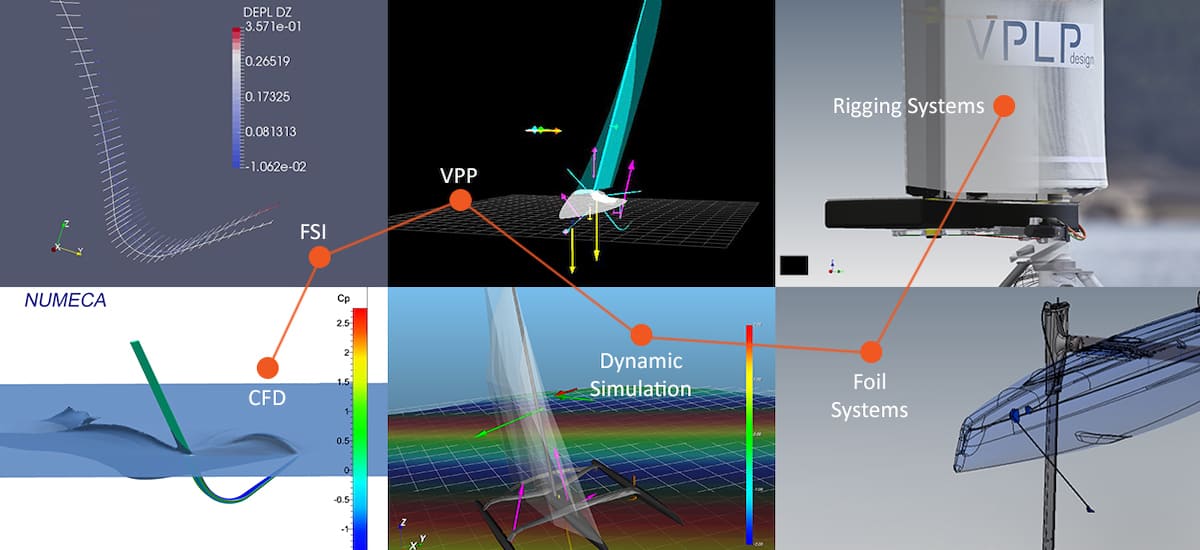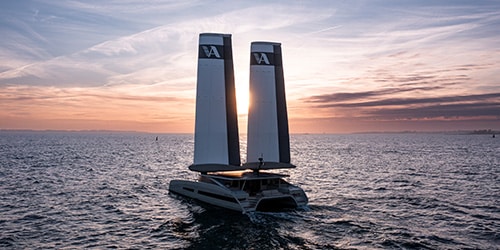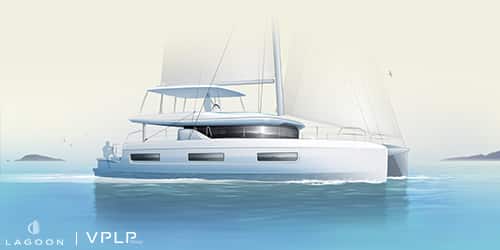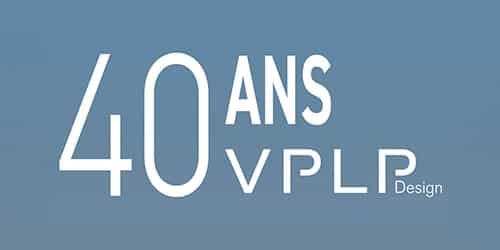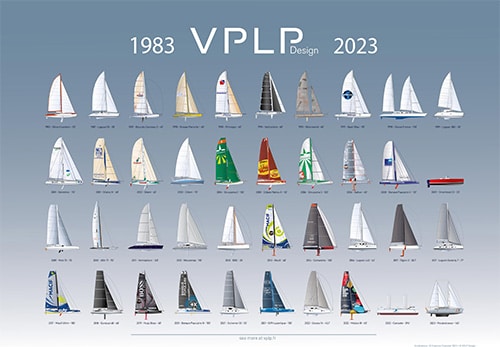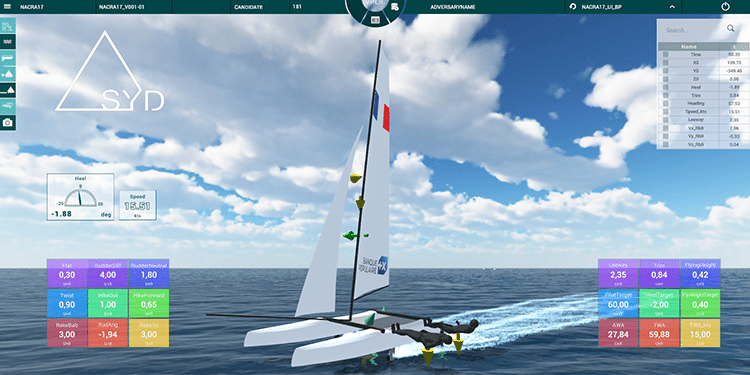In recent years the firm has been developing a veritable engineering department. The aim is to develop in-house the modelling and digital simulation tools that have become ubiquitous in the design of sea-going vessels, from racing thoroughbreds to cruising yachts and even working boats.
Naval architecture is changing. Nowadays digital tools for modelling hulls, appendages, structures and rigging, for hydrostatic and hydrodynamic simulation and for performance prediction are of crucial importance. “Test it, test it, test it! The goal is to get as close as possible to the real thing,” says Vincent Lauriot-Prévost.
And the consequence of this digital revolution for VPLP Design is an expanding pool of engineers working alongside its architects. No fewer than six engineers have joined the firm in the last three years, representing a third of VPLP’s twenty-strong workforce.
Xavier Guisnel (Ponts & Chaussées), currently the engineering department’s coordinator, was the first to join VPLP Design back in 2013. Adrien Letourneur (EnstaParisTech) looks after the VPP and hydrodynamics; Nicolas Baral (PhD in materials science) is our structures specialist; Philippe Orhan (École Polytechnique) works on the VPP and CFDs; and Paul Kerdraon (École Polytechnique) is completing a thesis on the development of a dynamic simulator and the modelling of unsteady hydrodynamic phenomena. Nicolas Sdez (EnstaParisTech) is in charge of developing Oceanwings – the firm’s automated and reefable wingsail – and the working boats that use the system. Last but not least, Pierre Renaud (Arts & Métiers ParisTech/University of Southampton) focuses his efforts on Voilavion, the foiling catamaran produced by Magnard Innovation for the general market.
VPLP’s Engineering Department is involved in every field of the firm’s expertise. Racing is, of course, a major account: “Over the last five years we have had to compete with technical teams which are cultivating their presence and digital resources,” says Vincent Lauriot-Prévost. “That motivates us to focus on our core expertise: design and performance. The America’s Cup between 2007 and 2010 was the watershed moment that made us realize this.” Cruising yachts are also part of the trend: “We’ve done performance prediction for various Lagoons,” says Nicolas Sdez, “and of course, we use pre-dimensioning and modelling tools for super-yachts.” It’s the same for working boats, a sector enjoying fast growth at VPLP Design: “We’ve developed a sail/motor routing algorithm for hybrid propulsion as part of the Oceanwings project,” says Nicolas Sdez.
